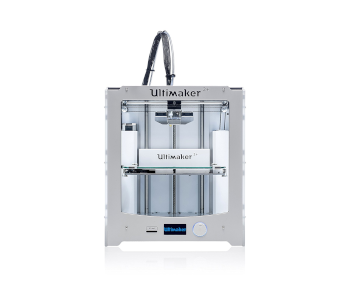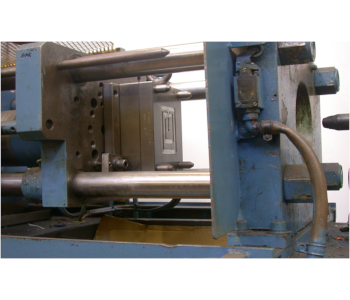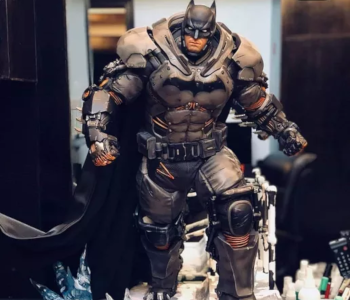3D Printing vs Injection Molding: Which Technique is Better?
There are a lot of techniques when you want to create something today. In the manufacturing world, the two most common ones are injection molding and 3D printing. These are the most practical options when you want to produce complex parts.
Changing Manufacturing
Injection molding has been the go-to technology for large scale manufacturing. If you want to produce parts or prototypes quickly and repeatedly, this is the one you’re going to opt for. It’s automation-friendly and makes reliable copies of your original design every time.
3D printing is still a new technology but is slowly changing the minds of manufacturers. As the machines capable of high-speed 3D printing continue to evolve, it is now capable of producing similar results to injection molding.
In the past, these two were considered competing techniques. Still, as manufacturing processes mature, these two are now being used side by side. There are cases when a certain process is faster than the other. Combining both these techniques can optimize overall manufacturing efficiency.
For Your Hobbies
Since injection molding involves creating a mold, it’s not the best technique to use for hobbyists. This is where 3D printing comes in with its additive process of building your model layer by layer. If you like to make parts, components, or even entire projects, 3D printing is the way to go.
3D Printing vs Injection Molding Comparison

As you think about your project and start to think about which manufacturing technique you will use, 3D printing and injection molding are the most common ones to consider. There are a few factors to consider to choose the best one, like time, budget, volume, and precision.
Both technologies also have their own pros and cons, and knowing these will let you decide on the best one to be a perfect fit for your project.
Large scale manufacturing is a slightly different story as they use injection molding for efficiency. This is so that they can achieve a lower cost per part for incredibly large volumes. However, it takes quite a bit of time and multiple iterations to perfect the mold design.
Sometimes, 3D printing can take the slack here, but there are cases when it’s just not the best technology, especially with high volume production. 3D printing water bottles may not be the most efficient way to go about it. However, improved additive manufacturing techniques can make better molds and lower the cost of perfecting them.
The Basics
Injection Molding Basics
Injection molding is a traditional manufacturing process that produces parts and components by injecting material into a mold. The material is usually heated, liquified plastic that follows the shape of the mold that’s a negative of the part that you want to produce.
As the plastic cools down and solidifies, it follows the shape of the mold, which is then ejected and inspected. If it meets the requirements, then it can now be distributed to those who need the part.
Once you have perfected the mold, it’s easy to see how efficient this process is if you’re doing large-scale manufacturing. If you have a part or component in high demand, this is the quickest way to replicate it while meeting quality standards.
3D Printing Basics
3D printing works differently. Instead of forming a mold to get you to shape your product, you do it in 3D CAD software, then have a machine print layer by layer. That’s why it’s also called additive manufacturing since it adds material from the bottom up.
Using this process, you don’t need a mold. However, you do need to make a 3D file that your printer can use as a guide on how to produce your model.
Injection Molding Equipment and Materials

Injection molding is commonly a four step process. The first one is mold development, injection, cooling, and ejection. You’ll generally need an injection molding machine that will involve all of these small processes into one.
The machine will usually have a material hopper to where your heated plastic is stored. It will also need an injection ram, a device that will push the liquid plastic into the mold. You can think of it as some kind of plunger that will deliver your material into the mold. You also need a heating unit that will heat your material to easily be injected into the mold.
Another essential element that you’ll need is the molds. These can make or break your entire process as you’ll need to perfect these, so the product you’re making comes out exactly as you want them.
The molds are also quite expensive as they are usually made with hardened steel or aluminum to withstand the heat. This is especially true if you want to create an original design where the molds need to be manufactured just for you.
Lastly, you’ll need the material for your final model. There are a lot of types to choose from. The most popular ones are plastic polymers and metal alloys, especially for replacement machine parts. However, it will totally depend on what you’re making, so there’s no shortage of options.
3D Printing Equipment and Materials
3D printing as a manufacturing process is much simpler. You can think of it as regular office printing where you only need a printer and paper. In the case of 3D printing, you need the 3D version and the material of your final product.
There is a lot to choose from when it comes to the 3D printer. You can have an entry-level one for hobbyists and a more expensive one for large scale manufacturing. You also have a ton of options, especially if you don’t want to invest in a costly machine.
One of the things you can do is opt for a printing service to make your designs for you. These services are excellent for testing out ideas and prototyping.
The next thing you’ll need is the material of your finished product. In the case of 3D printing, it’s called a filament. Printers use spools of these. They are fed into the machine, melted, and finally extruded to form your product.
There are a lot of different types of filaments. The most common one for beginners is thermoplastics, which are easy to handle. Depending on your design, you can also use other types, such as stone, metal, and wood blends. These are more challenging to manipulate, but they can have the perfect properties you want your model to have.
When to Use Injection Molding

The injection molding manufacturing process is perfect for those planning to produce the same product or object in high volumes. If this is the way you’re going with your project, then injection molding is probably the best solution. Here are some of the more specific reasons to use this process.
High volume production
Specifically, if you’re planning a large production run of over a thousand or more pieces per run, injection molding is the one for you. It’s the most efficient way to achieve this. Once you have dialed down on every aspect of the process, it will be much easier to manage and oversee.
Part design is finalized
Since you’re going to need a mold to manufacture parts and objects with this process, it’s going to be quite a challenge if you’re still changing up the design. Once you have the final version of the product you want, this will be the best way to make them quickly.
Any size and complexity
The object you want to make is not limited to injection molding. You can even create pretty solid products since it uses a one-step forming process that makes your model stronger than other processes.
Injection molding is also great for products that interact with others since there’s no additional finishing step after it comes out of the mold. It will be smooth, which reduces friction, making it perfect for producing parts such as gears.
When to Use 3D Printing
The 3D printing process covers an entirely different niche. Yes, you can use it to create similar parts, but depending on your needs, it will not be as efficient compared to injection molding. However, there are also cases where it’s the best process to use, and here are some of them.
Limited run models

3D printing may not be the most economical way to manufacture high volume products. However, they do have a room with limited run models and objects. If you’re looking to create prototypes and do a small-batch production of a particular model, this is the most efficient way to do it.
Designs that need tweaking
One advantage of 3D printing is that it allows you to make changes on the fly. Print one copy of your design, and as soon as you can see something wrong, you can go into your software and make the necessary changes. If you’re not yet sure about the final outcome of your product, 3D printing will help you refine it until you perfect it.
Quick turnaround
3D printing is quick as long as you’re not producing on a large scale. If you have projects that need to be done as fast as possible, this is the best option. It is great to make particularly small plastic parts as 3D printers can build them up in minutes.
Benefits of Injection Molding
Injection molding offers excellent advantages when it comes to large scale production. It comes with precision and repeatability that makes it an efficient process. With injection molding, you have access to a lot of materials from plastic to metals allowing you to create products with different properties.
The area where injection molding shines is in mass production. If you’re also interested in creating a product with intricate shapes and designs, this is the process that will enable you to do that. The wide array of material choices also allows you to create parts with improved strength, flexibility, or other physical properties that will fit its use.
Benefits of 3D Printing
Additive manufacturing or 3D printing has its own set of benefits compared to traditional techniques like injection molding. First of all, it’s more suited to iterative designs, so if you have a project that’s not quite ironed out, this is the process for you.
For a long time, 3D printing was considered a technique best suited for rapid prototyping. However, with newer and better technology, that’s not the case anymore as it’s also become more reliable. Still, prototyping is one of its strong suits as it can do it quickly and with less waste compared to other processes.
All you really need to do is print your project to test it, and if there are changes you want to make, you can go into the 3D modeling software. You can then print it to make sure you verify the changes that you’ve made. This flexibility will save you time and money in the long run as you continue to improve your product design.
There is very little waste material with 3D printing. You’ll only need to use the material you need for the entire project. Compared to CNC machining and injection molding, this is certainly a big benefit.
You’ll also avoid inventory problems and costs since you can print your design whenever you need it. No more warehouse or supply chain management problems since you don’t need to stock on finished products to print them on demand.
The Difference

Both injection molding and 3D printing can make a strong case when it comes to the best manufacturing process. However, it still boils down to your specific needs. They do have their own sets of benefits and positive qualities.
Once you understand these differences, you’ll be informed to make the best decision for your manufacturing needs.
Cost
Machines for injection molding processes are typically expensive and can cost hundreds of thousands of dollars. However, getting a high quality one can offer you years, even decades of use.
For entrepreneurs and those creating their own products, getting one may not be the most feasible use of your investment. It’s really not something that you would purchase. However, there is a more cost-effective solution, and that’s to use providers that offer injection molding services.
Another aspect that makes it expensive is that you need molds that are custom built for your product. That can add to the cost in the area of thousands to even tens of thousands of dollars.
3D printing is significantly less expensive than injection molding. For one, the printer costs far less. There are tons of options to choose from, so whether you’re a hobbyist or into manufacturing, you can find the right one for your needs and projects. 3D printers will generally set you back a few thousand dollars, and there are no added upfront costs since you don’t need to build a custom mold.
Similarly, with injection molding, some companies offer 3D printing services, which is even more cost-efficient, as you’ll only need to pay for the use of the machine and materials. However, with the new printers being made now, it’s safe to say that even small manufacturing business can buy their own devices.
Volume
The biggest difference between injection molding and 3D printing is in terms of production volume. Even though 3D printing is much less expensive when it comes to equipment and materials, injection molding is still the best process for high volume production.
If you’re looking at production runs in the tens of thousands of pieces, and up, injection molding is the ideal choice. At these large volumes, your investment in developing the perfect mold and acquiring a machine should pay itself back and more.
3D printing, on the other hand, is perfect for low to mid volume needs. Prototyping and on-demand production are the best examples here. It’s actually the best type of process when you’re looking for a low-cost prototyping option.
You can also keep your costs low with less storage as you can print when there is demand. 3D printing technology has also improved and evolved to produce your models relatively quickly that even production runs in the high thousands can make sense.
Time
When you have everything set up, injection molding is the faster process in terms of per part cycle. However, it does not tell the entire story as molds can take a lot of time to develop, produce, and perfect.
Creating a custom mold from steel or aluminum can take weeks, even months. If you’re relying on a service provider, you might also need to wait for machine time. These factors make the overall turnaround time a lot longer than usual. However, once you’re all set up, making your part should be quick.
3D printing does not need any lead time. After you make the design on your software, you’re ready to go. The actual printing process of your part takes a bit of time, usually in a few hours.
Final Thoughts: What Technique to Use
The technique that you will choose will entirely depend on your specific needs. Both have their own pros and cons, but you can also combine these two processes to get the most at what they’re most efficient in.
Prototyping your mold can be made a lot quicker with 3D printing. Instead of looking at months of development time, you can cut that into weeks, allowing you to get everything ready for injection molding.
You can also combine the two processes if you’re creating an incredibly complex product. You can use injection molding for some components and 3D print smaller ones that need a bit of finesse.
The great thing about the technology that exists today is that you have a ton of options, whether it’s injection molding or 3D printing. It all boils down to whether you’re going to produce in the high thousands or not.





